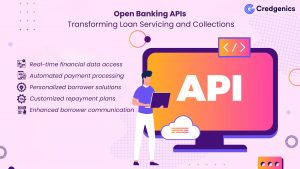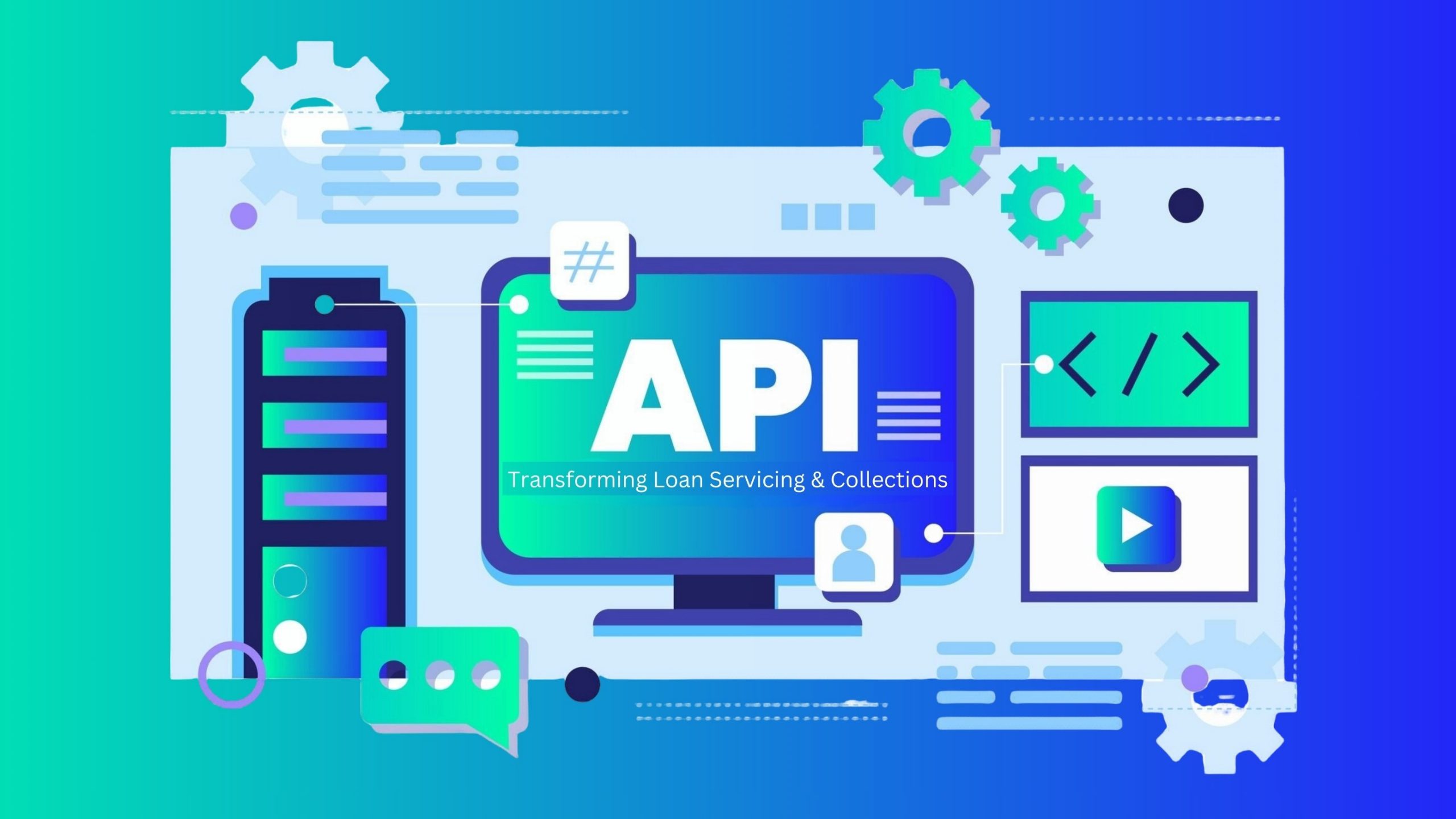The financial services landscape is experiencing a dramatic transformation through Open Banking APIs. These digital innovations revolutionize loan servicing and collections by creating unprecedented connectivity between lenders and borrowers. Through secure, efficient data sharing between banks, fintechs, and third-party providers, these APIs are reshaping traditional lending practices while ensuring regulatory compliance and enhancing customer experience.
What are Open Banking APIs
Open Banking APIs (Application Programming Interfaces) serve as secure digital bridges in the financial ecosystem. These standardized protocols allow banks to share customer’s financial data with authorized third-party providers, but only with explicit customer consent. The technology typically implements RESTful API architecture, enabling real-time data exchange for functions ranging from basic account queries to complex transaction processing.
Modern Open Banking APIs typically support:
- Account Information Services (AIS) for balance and transaction data
- Payment Initiation Services (PIS) for direct payment processing
- Product Information Services for rates and offering details
- Customer Identity Verification services
Transforming Loan Servicing with Open Banking APIs

Loan servicing encompasses the entire lifecycle of a loan, from disbursement to final payment. Open Banking APIs transform this process through:
1. Enhanced Data Accuracy: APIs enable lenders to access real-time financial data of borrowers, which allows for accurate assessment of their financial status. This reduces errors and improves decision-making.
2. Streamlined Processes: Automated data retrieval through APIs reduces manual data entry errors and accelerates the loan approval process.
3. Personalized Loan Management: With access to detailed financial information, lenders can tailor loan products to meet individual borrower needs, such as customized repayment plans or refinancing options.
4. Efficient Payment Processing: APIs facilitate seamless payment initiation and tracking. This automation ensures timely loan repayments and reduces the risk of defaults.
Enhancing Collections with Open Banking APIs
Open Banking APIs revolutionize collections through data-driven strategies and automated processes:
1. Enhanced Financial Intelligence: Collectors can gain a comprehensive view of a debtor’s financial situation, including income and expenditure patterns. This approach enables more informed and empathetic collection strategies.
2. Smart Repayment Solutions: By understanding a debtor’s financial capacity, collectors can propose customized repayment plans that are realistic and manageable for the debtor. This personalization increases the likelihood of successful debt recovery.
3. Proactive Customer Engagement: Access to real-time financial data allows institutions to identify potential payment issues before they escalate, which enables early intervention strategies. Also, APIs can integrate with communication platforms to send timely reminders and updates to keep borrowers informed and engaged.
Recommended Read: How Agentic AI is Transforming Financial Operations
Key Benefits to Customers
Through Open Banking APIs, financial institutions can deliver significant benefits to their customers:
- Improved Transparency: The system provides customers with clear visibility into their financial obligations and repayment schedules, which fosters trust and reduces the anxiety typically associated with managing debt.
- Empowered Financial Management: By gaining access to personalized financial insights, customers can make more informed decisions and manage their finances with greater effectiveness.
- Enhanced Security: The API infrastructure operates under rigorous security protocols and ensures that all customer data remains protected and fully compliant with regulatory standards.
Challenges and Considerations
While the benefits are substantial, implementing Open Banking APIs comes with challenges:
- Data Security and Privacy: Ensuring the security of sensitive financial data is paramount. Institutions must adhere to stringent data protection regulations and implement robust security measures. For instance, compliance with the Digital Personal Data Protection Act (DPDP Act) is crucial.
- Integration with Legacy Systems: Integrating APIs into existing banking systems can be complex and may require significant technological upgrades. Ensuring interoperability while maintaining security across traditional and modern banking infrastructures is a challenge.
- Regulatory Compliance: Navigating the regulatory landscape requires careful planning to ensure compliance with evolving standards and guidelines. Entities must align with RBI’s Guidelines on Data Protection, the Personal Data Protection Framework proposed under the DPDP Act. Additionally, the Unified Payments Interface (UPI) Guidelines and NPCI’s data localization norms play a key role in safeguarding financial data.
In Conclusion
Open Banking APIs aren’t just transforming financial services—they are fundamentally revolutionizing loan servicing and collections. By breaking down traditional data silos and enabling real-time connectivity, these APIs have ushered in an era where financial institutions can make smarter decisions, automate complex processes, and deliver unprecedented value to their customers. Financial institutions that adopt Open Banking APIs are seeing clear benefits, including faster operations, quicker processing, and happier customers. By embracing this technology, they’re positioning themselves as leaders in modern financial services.
FAQs
1. How do Open Banking APIs improve loan collections?
Open Banking APIs improve loan collections by offering real-time insights into a borrower’s financial status. They enable proactive engagement through automated reminders, facilitate personalized repayment plans, and allow lenders to identify potential defaults early. This proactive approach ensures a more efficient and customer-friendly collections process.
2. What are the benefits of APIs for banking and finance in loan management?
APIs for banking and finance enable seamless data exchange, automate loan approval processes, enhance accuracy, and support personalized financial solutions. They also strengthen security and compliance, which makes banking operations more efficient and customer-focused.
3. Can Open Banking APIs help reduce loan defaults?
Yes, Open Banking APIs can help reduce loan defaults by providing lenders with real-time financial insights. This allows them to identify early warning signs, engage proactively with borrowers, and offer flexible repayment options, which ultimately improve loan repayment rates.
4. How do APIs for collections enhance the debt recovery process?
APIs for collections enhance debt recovery by integrating with financial data sources to assess a borrower’s repayment capacity. They enable automated payment processing, personalized debt settlement options, and timely reminders. As a result, these APIs help in a more efficient and less intrusive collections strategy.
5. Why should financial institutions adopt Open Banking APIs for collections?
Financial institutions should leverage Open Banking APIs for collections to streamline debt recovery, enhance borrower engagement, and ensure regulatory compliance. By automating payment processes and increasing transparency, these APIs improve recovery rates while delivering a seamless borrower experience. Additionally, they provide real-time insights for smarter decision-making and reducing default risks. With open banking technology, financial institutions can significantly enhance operational efficiency, ensure robust regulatory compliance, and increase financial recovery.






